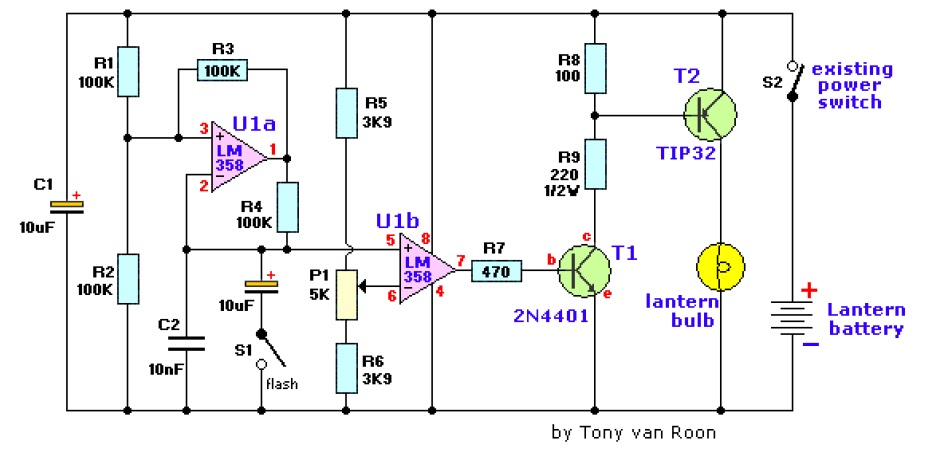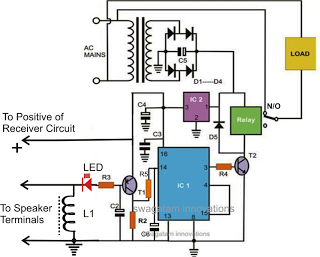
the dc motor circuit

Selecting the appropriate DC motor is essential for constructing mobile robots. Testing DC motors is straightforward and can be accomplished by assembling a basic DC motor circuit. The components needed for this circuit include a DC motor, a battery power source with a minimum voltage of 3 V, and red and black alligator clips. To construct the circuit, the red alligator clip should be connected to the positive terminals of both the battery and the motor, while the black alligator clip connects to the negative terminals of the battery and the motor. For controlling the operation of a DC motor, a specialized circuit such as an H-bridge can be utilized. The H-bridge circuit consists of an arrangement of transistors, along with resistors and diodes, to regulate the operation of a DC motor.
The basic DC motor circuit allows for a simple on/off control of the motor. By connecting the battery to the motor through the alligator leads, the motor can be activated or deactivated based on the connection of the leads. However, for applications requiring direction control and speed modulation, the H-bridge circuit is essential.
An H-bridge consists of four switches (typically transistors) arranged in a bridge configuration. By controlling the states of these switches, the current flow through the motor can be reversed, allowing for bidirectional control. For instance, turning on switches S1 and S4 while turning off S2 and S3 will cause the motor to rotate in one direction. Conversely, activating S2 and S3 while deactivating S1 and S4 will reverse the motor's direction.
In addition to direction control, the H-bridge can also facilitate speed control through pulse-width modulation (PWM). By varying the duty cycle of the PWM signal applied to the transistors, the average voltage and current supplied to the motor can be adjusted, thereby controlling its speed.
In summary, while a basic DC motor circuit suffices for simple applications, an H-bridge circuit provides the necessary functionality for advanced control of DC motors, enabling both direction and speed modulation essential for mobile robotics.Choosing the right DC motor is critical when building mobile robots. Testing DC motors is an easy process and can be done by building a simple DC motor circuit. All that is required to build this circuit is a DC motor, a battery power source of at least 3 V, and red and black alligator leads. To build the circuit, the red alligator lead is connected to the positive terminal of the battery and motor, whereas the black alligator lead is connected to the negative terminal of the battery and motor.
In order to control the functioning of a DC motor, a specialized DC motor circuit can be used, such as an H-bridge. The H-bridge circuit design is an array of transistors that work along with resistors and diodes to command a DC motor..
🔗 External reference
The basic DC motor circuit allows for a simple on/off control of the motor. By connecting the battery to the motor through the alligator leads, the motor can be activated or deactivated based on the connection of the leads. However, for applications requiring direction control and speed modulation, the H-bridge circuit is essential.
An H-bridge consists of four switches (typically transistors) arranged in a bridge configuration. By controlling the states of these switches, the current flow through the motor can be reversed, allowing for bidirectional control. For instance, turning on switches S1 and S4 while turning off S2 and S3 will cause the motor to rotate in one direction. Conversely, activating S2 and S3 while deactivating S1 and S4 will reverse the motor's direction.
In addition to direction control, the H-bridge can also facilitate speed control through pulse-width modulation (PWM). By varying the duty cycle of the PWM signal applied to the transistors, the average voltage and current supplied to the motor can be adjusted, thereby controlling its speed.
In summary, while a basic DC motor circuit suffices for simple applications, an H-bridge circuit provides the necessary functionality for advanced control of DC motors, enabling both direction and speed modulation essential for mobile robotics.Choosing the right DC motor is critical when building mobile robots. Testing DC motors is an easy process and can be done by building a simple DC motor circuit. All that is required to build this circuit is a DC motor, a battery power source of at least 3 V, and red and black alligator leads. To build the circuit, the red alligator lead is connected to the positive terminal of the battery and motor, whereas the black alligator lead is connected to the negative terminal of the battery and motor.
In order to control the functioning of a DC motor, a specialized DC motor circuit can be used, such as an H-bridge. The H-bridge circuit design is an array of transistors that work along with resistors and diodes to command a DC motor..
🔗 External reference





